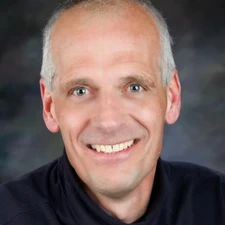Roel Snieder

The 2016 Beno Gutenberg Medal is awarded to Roel Snieder in recognition of his outstanding contributions to the theoretical foundations of modern methods of seismic imaging.
Roel Snieder, a professor at the Colorado School of Mines, is an outstanding theoretical seismologist working at the highest level of science. He is a fellow of the American Geophysical Union, an honorary member of the Society of Exploration Geophysicists and a corresponding member of the Royal Netherlands Academy of Arts and Sciences. He has created some of the foundations of modern seismology, underpinning several fields of research that have emerged over the past three decades. Very early in his career, Snieder established an international reputation by developing first order perturbation theory for seismic surface wave propagation. His theory has been the base of what is known today as finite-frequency tomography, an imaging technique that takes the effects of wave diffraction into account. He made fundamental contributions to most of the recently emerging fields in seismic imaging. He wrote a series of insightful papers on the properties of field correlations and their use for imaging at different scales. While always concerned by deep fundamental problems, he has been very successful in showing how the fundamental concepts can be applied in exploration geophysics, a field where he has rapidly become a leading figure. He consistently proposes new approaches associating signal processing and numerical modelling of wave propagation to improve the use of the growing amount of data recorded by modern arrays. Snieder is a superb theoretical seismologist who expresses his results in papers and books that are models of clarity and insight. He has a tremendous record of highly original and innovative research in a broad range of applications. With his very clear style of communicating complex scientific results, he contributed much to the distribution of new ideas and concepts among his fellow geophysicists, as well as the general public. He has shown particular concern for illuminating the scientific issues needed to understand and address some of the world’s most pressing problems.
